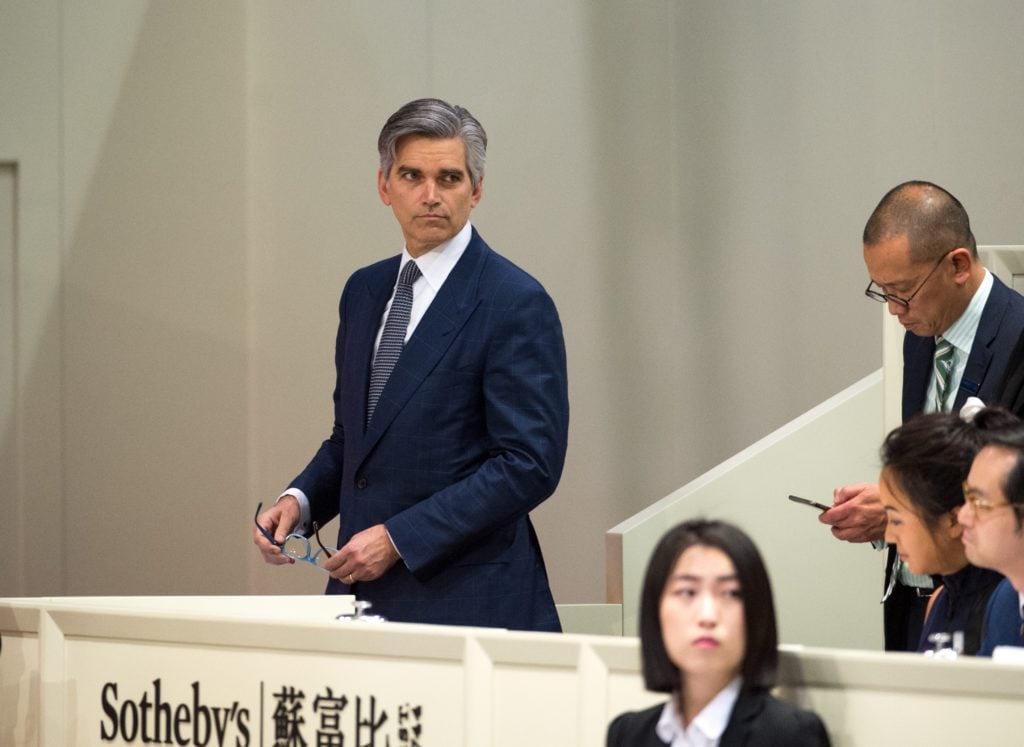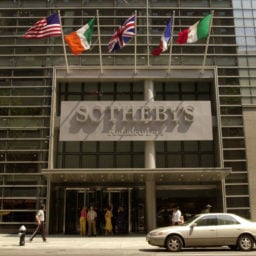There were two competing schools of thought about Monday’s news that Sotheby’s CEO Tad Smith, who joined the auction house in 2015 from Madison Square Garden, would be replaced by Charles Stewart, the CFO of telecom provider Altice USA, effective immediately. The first was that the move came out of the blue, particularly in light of Smith’s steering of the storied house to a lucrative sale of $3.7 billion to French-Israeli tycoon Patrick Drahi. The second was that the C-suite switch amounted to business as usual in a corporate acquisition, with the new owner wanting his own team in place regardless of the previous regime’s merits.
No matter which argument you subscribe to, the fact remains that Smith’s four-and-a-half-year reign is now over. It’s only natural, then, to look back on his time at the Sotheby’s helm to see how the company evolved under his leadership—and to ask how those mutations might portend what comes next in the company’s return to private control.
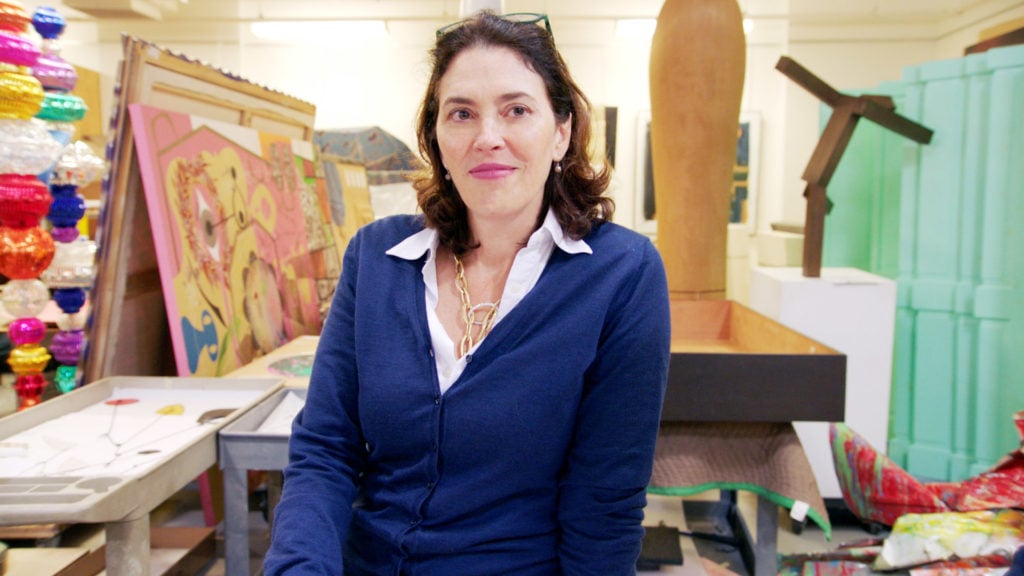
Art Agency, Partners co-founder and Sotheby’s chairman and executive vice president Amy Cappellazzo in The Price of Everything. Image courtesy of HBO.
Acquisitions and Adaptations
Arguably the defining aspect of Smith’s tenure was a varied slate of corporate acquisitions that began only nine months after his hire. The first of these was Art Agency, Partners (AAP), the high-end art advisory firm then led by rainmakers Amy Cappellazzo, Allan Schwartzman, and Adam Chinn. The deal cost Sotheby’s a grand total of $85 million, including performance incentives that AAP eventually reached in the succeeding years. But the auction house was just getting started.
In the next 25 months, Sotheby’s also absorbed the Mei Moses Art Indices, a set of art-market analytics tools primarily focused on works sold multiple times at auction; Orion Analytical, a forensic art analysis firm whose founder, Jamie Martin, would be named the head of the auction world’s first department of scientific research at Sotheby’s; Thread Genius, a machine-learning startup intent on creating algorithms capable of recommending works of art and design to users; and Viyet.com, an online retailer of design and vintage and antique furniture that was rebranded as Sotheby’s Home in 2018.
Art Agency, Partners, aside, the cost-benefit analysis of these acquisitions is a hazy calculus. The acquisition price of the Mei Moses indices, Orion Analytical, and Viyet were all undisclosed, while Thread Genius’s cost was low enough to be considered “non-material” to Sotheby’s.
Yet the value of these moves was about more than dollars and cents. Together, Sotheby’s acquisitions arguably became a harbinger of, and contributor to, the trend of galleries and auction houses alike transitioning from simple dealerships to full-service firms capable of fulfilling a client’s every need. In that sense, the buying spree fundamentally altered the market’s perception of Sotheby’s, which at the time was the oldest company on the New York Stock Exchange.
In the span of roughly three years, the company used acquisitions and technology to transform itself into a multifaceted actor boasting clear strategic differences from chief rival Christie’s—a differentiation that could make Sotheby’s enticing to potential buyers interested in an auction house facing the future.
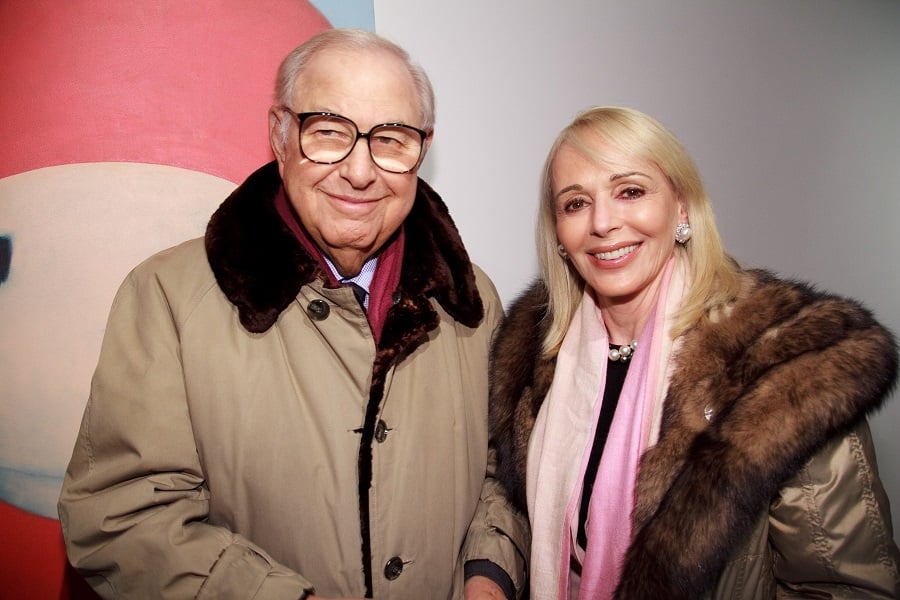
Former Sotheby’s CEO A. Alfred Taubman and wife Judy Taubman. Photo: Dustin Wayne Harris/Patrick McMullan.
The Guarantee Game
Sotheby’s also distinguished itself in its approach to guarantees, financial tools that help auction houses secure high-value materials but also sometimes cost them big money if works fail to meet expectations.
Christie’s and Sotheby’s both experienced heavy losses on guarantees in the fallout from the 2008 global financial crisis and cut back sharply on risk in the ensuing years. When the market picked up steam again from 2010 onwards, both steered away from direct guarantees to third-party guarantees as a way to offload risk. But that’s where the two houses diverged a bit in strategy. As a public company, Sotheby’s was held to a higher standard of financial reporting, and generally trended toward being slightly more conservative in the deals it structured.
And when Sotheby’s took a risk that didn’t pay off, it was under much more scrutiny than its rival to explain its misstep. A key test of Smith’s appetite for risk came just a few months into his tenure in 2015 when Sotheby’s and Christie’s engaged in heated competition to win the collection of A. Alfred Taubman, the longtime former CEO of Sotheby’s. Some observers said Sotheby’s couldn’t be seen losing out to arch-rival Christie’s on a collection so tied to its brand, though others said it might not be worth the investment—particularly since Taubman was the only person sentenced to a year in federal prison for his role in a wide-ranging price-fixing scandal with Christie’s.
In the end, according to SEC filings that September, Sotheby’s shelled out a $500 million guarantee to the late Taubman’s heirs. Several months later, the house disclosed it would lose $12 million in the fourth quarter as a result of the deal—though Smith insisted it was an isolated case. “There was only one Alfred Taubman,” Smith said in a conference call with investors at the time.
The Taubman estate was, however, a key example of how Sotheby’s, as a public company, faced unique consequences when a deal didn’t pay off. A similar dynamic surfaced last year when the house was forced to reveal it had suffered losses after two high-profile guaranteed works failed to meet expectations, requiring them to give up a portion of the buyer’s premium.
Now that Sotheby’s is private, such disclosures will no longer be required, allowing the house greater flexibility (but not necessarily greater profitability) in its approach to dealmaking.
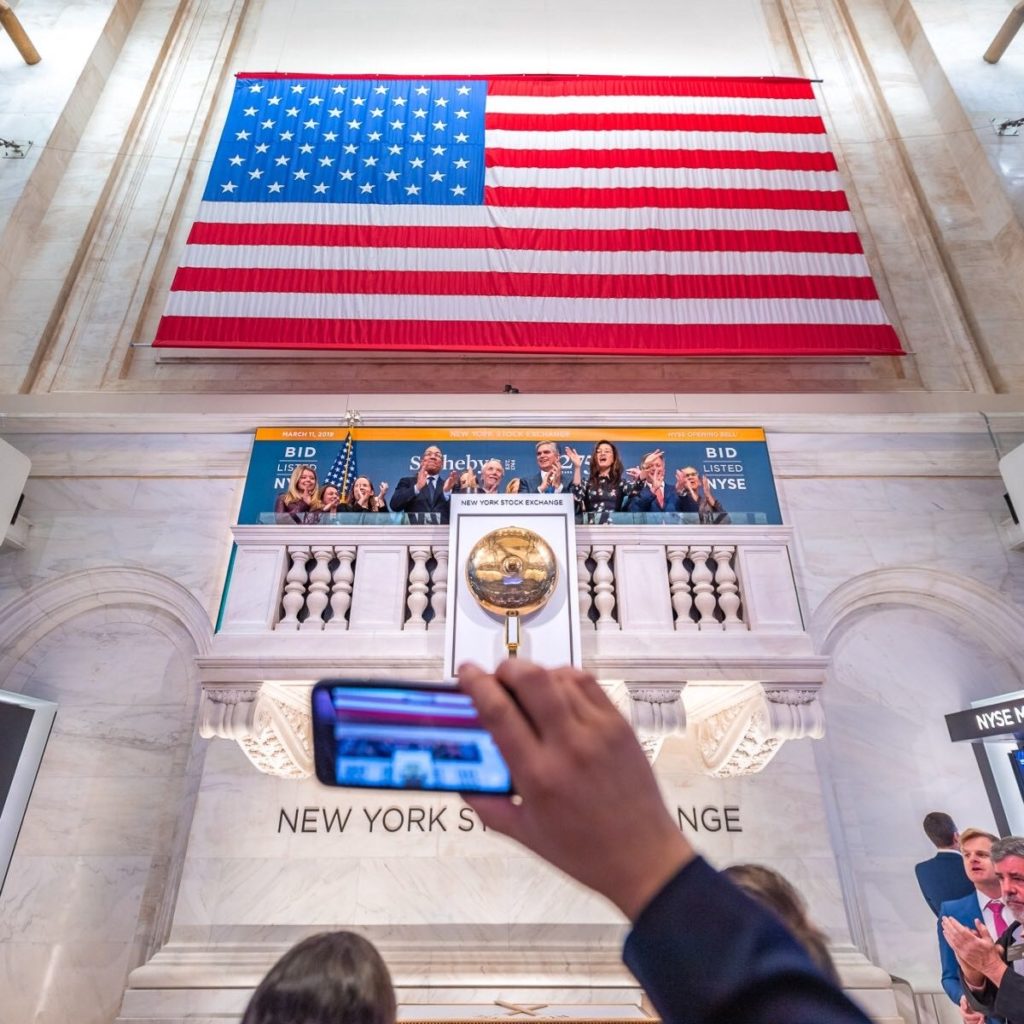
Sotheby’s representatives at the New York Stock Exchange. Photo courtesy of Sotheby’s.
Private Sales and Public-Market Performance
Smith counted private sales—which receive less public scrutiny and on which the house often enjoyed higher margins—as a priority from the start. In February 2017, Sotheby’s hired David Schrader to lead the division, and he began building out a dedicated team. That year, private sales totaled $744.6 million, up from $583.4 million in 2016. And in 2018, Sotheby’s hit a milestone when it topped $1 billion in private sales.
Meanwhile, in another move to make the house appear in a strong position, Sotheby’s also accelerated its stock buyback program under Smith, returning approximately $815 million to shareholders and repurchasing approximately 24 million shares between 2015 and 2018.
But savvy acquisitions and stock buybacks aside, Sotheby’s stock dropped roughly 15 percent from the time Smith was hired in mid-March 2015 ($41.36) until right before the acquisition was announced ($35.27) with a premium of 56.3 percent. During his tenure, the stock price ranged from lows near $20 per share to highs near $60 per share.
Depending on who you speak to, Smith and his team either did a stellar job convincing Drahi of the auction house’s potential value, or they dressed up the appearance of the company with sophisticated moves like stock buybacks and staff cuts just enough to make it appear as a worthwhile acquisition target. (While some of Sotheby’s acquisitions, like Orion Analytical, have already proven their worth by confirming valuable attributions or helping Sotheby’s through ongoing litigation, it remains to be seen exactly what the house has planned for, say, Thread Genius.)
“What did Drahi really inherit?” asked one auction house veteran. Smith “spent money on buying back shares and got rid of the people with institutional knowledge and now he goes off with his money. Does that really serve the company and the industry to lose institutional knowledge? It’s really hard to change the business… it’s based on experience, it’s not a brand to be exploited. You don’t manufacture at all and you can’t control supply.”
Art advisor Todd Levin put it more bluntly: “The stock is down when every other index has been on one of the greatest historical tears ever experienced by market indices. I’m still unclear what he [Smith] has done to bring serious value.”
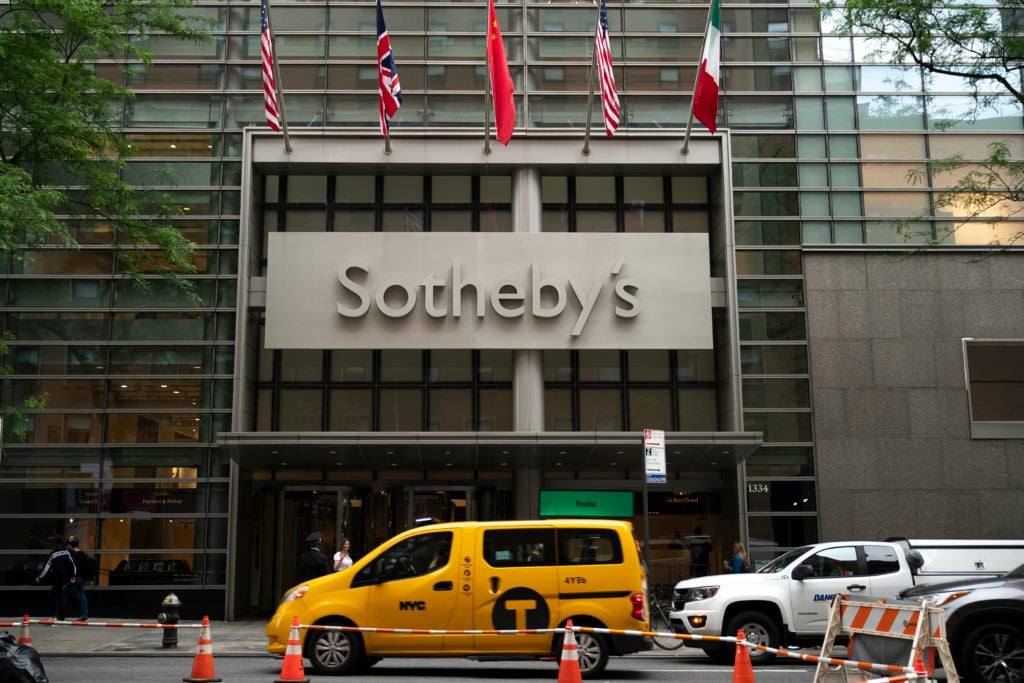
Sotheby’s headquarters on the Upper East Side in Manhattan, June 17, 2019 in New York City. (Photo by Drew Angerer/Getty Images)
A Look Ahead
Despite critics’ opinions, though, Smith transitions from the C-suite into the role of senior adviser to newly appointed CEO Charles Stewart with roughly $28 million in severance swelling his pockets. The question that looms larger than his legacy (and departure) is what Stewart’s hire means for the future of Sotheby’s.
At the moment, the responsible answer is that speculation seems like no more than just that. Sotheby’s shares stopped trading on the NYSE after the proposed deal with Drahi’s Bidfair USA was finalized in the opening days of October. Since that time, the house’s new owner has done little more than shuffle personnel at the top of the organizational chart. Apart from Stewart’s replacement of Smith, Drahi installed Jean-Luc Berrebi, the head of his family office, in place of former CFO Michael Goss. A regulatory filing announcing the move also included news that executive vice president and chief commercial officer John Cahill would be departing as well.
Beyond these moves, Drahi’s vision for the company remains even more mysterious than his past. It seems reasonable to think that his history in telecoms and media, along with his choice to plant some of his closest confidants at the apex of the company, indicates an intent to ride a beefed-up media presence and online services to new heights in the auction world. But this line of thought assumes that humans are perpetually rational actors whose prior histories always sync up with their next moves.
In truth, this vision of human nature is a convenient fantasy. A priest uncharacteristically late to an important engagement can easily ignore a beggar, and the founder of a social-media giant allegedly premised on free speech can easily refuse to take live questions from an audience of students. Similarly, it is entirely plausible that Drahi’s choice to surround himself with longtime allies—and even to tap a top executive at one of his telecom companies to be CEO—indicates nothing more substantial about his strategy for the house. Whether someone aims to be bold or conservative, they tend to want those they trust most nearby.
In the end, all we can be sure of is that, after four-and-a-half years, Tad Smith leaves Sotheby’s a fundamentally different auction house, while carrying a colossal bag of cash out the door. What remains to be seen is how much more value can be added onto the structures he built—and what his replacement will do independent of the answer.
